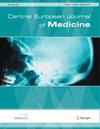Spinal hyperbaric prilocaine vs. mepivacaine in perianal outpatient surgery
引用次数: 8
Abstract
BackgroundThe aim of this randomised, clinical trial was to compare safety and efficiency of hyperbaric prilocaine and mepivacaine at a dosage of 0.5 ml each for perianal outpatient surgery in terms of transient neurologic symptoms (TNS) and postoperative recovery.Methods160 patients aged 18–80 years were randomized to receive a spinal anaesthesia (SPA) with 0.5ml of mepivacaine or prilocaine. We measured the expansion of the block, evaluated postoperative recovery times and determined the incidence of TNS one week after surgery.Results160 patients (93 male / 67 female) were available for analysis. Prilocaine led to shorter times from SPA to micturition (prilocaine: 178 (110–254) min vs. mepivacaine: 195 (130–305) min, p=0.0008) and discharge (prilocaine: 192 (126–267) min vs. mepivacaine: 220 (140–320) min, p<0.0001). 152 / 160 patients were available for the telephone follow-up. Six patients (9%) receiving mepivacaine compared to zero patients of the prilocaine group announced typical symptoms of TNS (p=0.0284).ConclusionBoth, hyperbaric mepivacaine 40 mg/ml and hyperbaric prilocaine 20 mg/ml can be used at a dosage of 0.5 ml each for SPA in perianal outpatient surgery. Due to the faster recovery profile and a lower incidence of TNS, we recommend the use of 10mg hyperbaric prilocaine 20 mg/ml for this indication.脊柱高压氧丙洛卡因与甲哌卡因在肛周门诊手术中的应用
本随机临床试验的目的是比较高压压丙洛卡因和甲哌卡因各0.5 ml用于肛周门诊手术的短暂性神经系统症状(TNS)和术后恢复方面的安全性和有效性。方法160例18 ~ 80岁的患者随机接受甲哌卡因或丙罗卡因0.5ml的脊髓麻醉。我们测量了阻滞的扩张,评估了术后恢复时间,并确定了术后一周TNS的发生率。结果160例患者(男93例,女67例)纳入分析。Prilocaine从SPA到排尿(Prilocaine: 178 (110-254) min vs. mepivacaine: 195 (130-305) min, p=0.0008)和排出(Prilocaine: 192 (126-267) min vs. mepivacaine: 220 (140-320) min, p<0.0001)。有152 / 160例患者可进行电话随访。甲哌卡因组有6例(9%)出现TNS的典型症状,而丙洛卡因组为0例(p=0.0284)。结论高压氧丙哌卡因40mg /ml和高压氧丙洛卡因20mg /ml各0.5 ml均可用于门诊肛周手术的SPA。由于恢复更快,TNS发生率更低,我们建议使用10mg高压丙胺20mg /ml用于该适应症。
本文章由计算机程序翻译,如有差异,请以英文原文为准。
求助全文
约1分钟内获得全文
求助全文

 求助内容:
求助内容: 应助结果提醒方式:
应助结果提醒方式:


